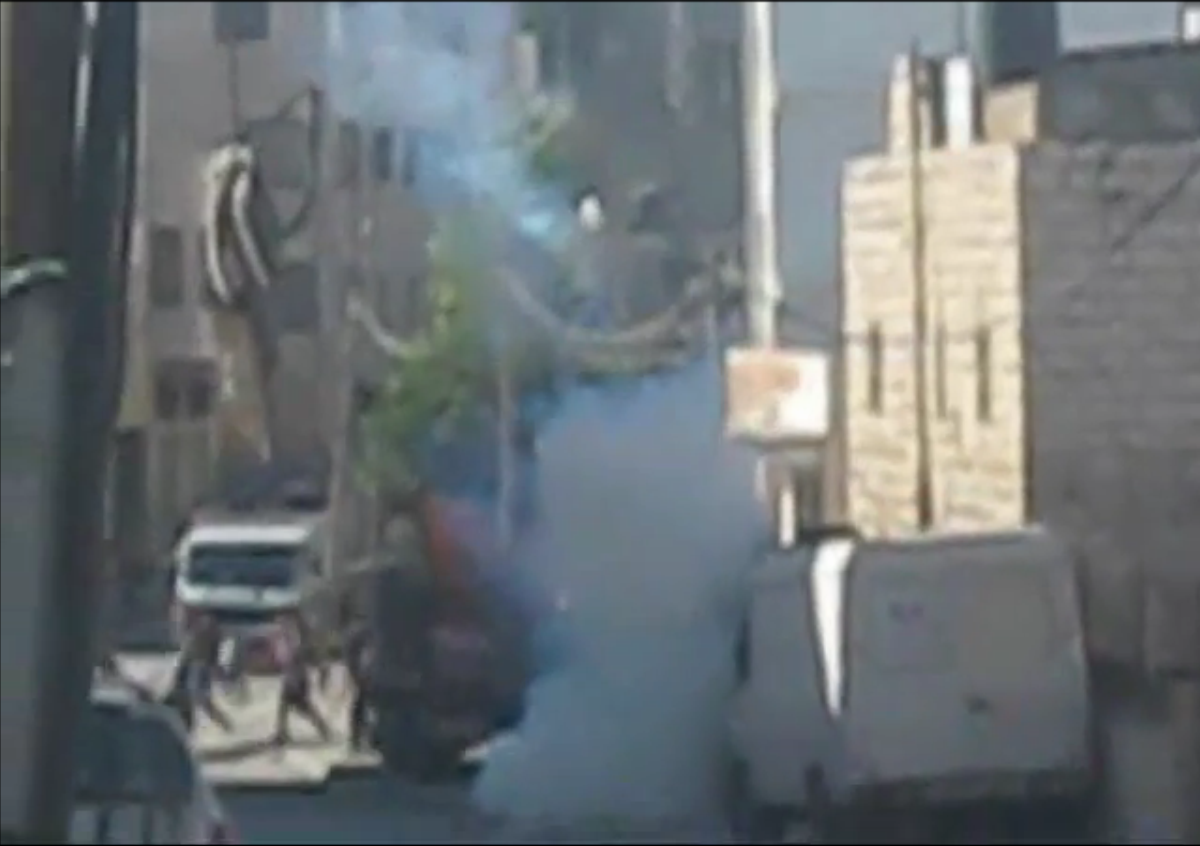Tag: Hebron
-
48 young olive trees destroyed in South Hebron Hills
4th October 2013 | International Solidarity Movement, Operation Dove | Qawawis, Occupied Palestine Yesterday morning, 3rd October, Palestinians discovered 48 olive trees destroyed alongside bypass road 317 near the South Hebron Hills area village of Qawawis. The olive tree grove belongs to Ali Shetat from Qawawis and had been planted six years ago. At 10…
-
Palestinian man and his 3-year-old niece assaulted by Israeli soldiers
3rd October 2013 | International Solidarity Movement, Khalil Team | Hebron, Occupied Palestine On Tuesday 2nd October local Khalil shop owner Abed Sider and his 3-year-old niece were hospitalised after being assaulted by several soldiers. On the day of his birthday at 6:30pm, Abed had his home invaded by five Israeli soldiers who had come to…
-
VIDEO: Israeli soldiers fire tear gas canisters and stun grenades at school children
1st October 2013 | International Solidarity Movement, Khalil Team | Hebron, Occupied Palestine This morning, Tuesday 1st October, Israeli soldiers fired two tear gas canisters and four stun grenades at children on their way to school. In this case, a few children threw stones and pebbles at Israeli forces as the soldiers stood watching them…



